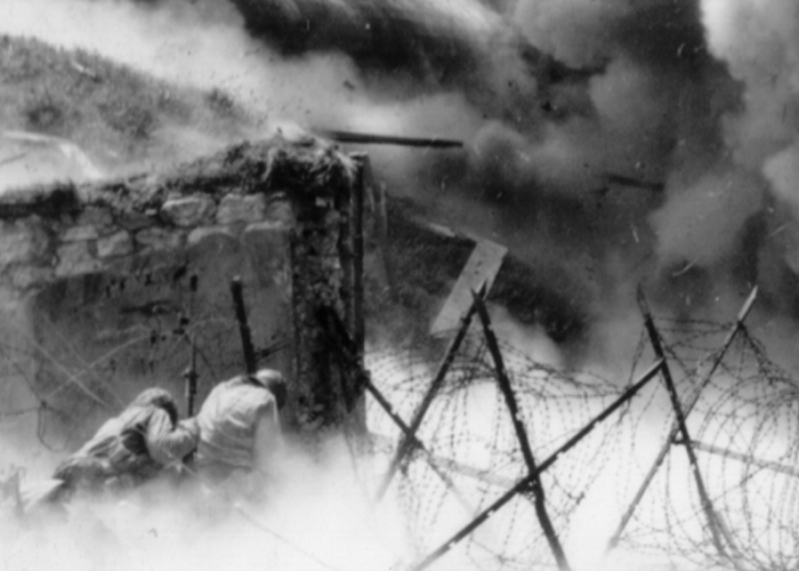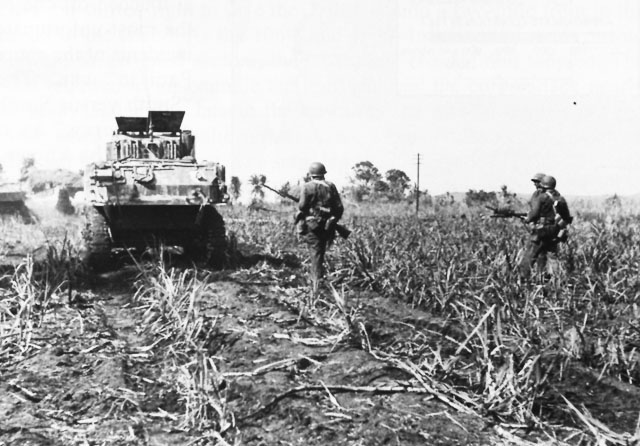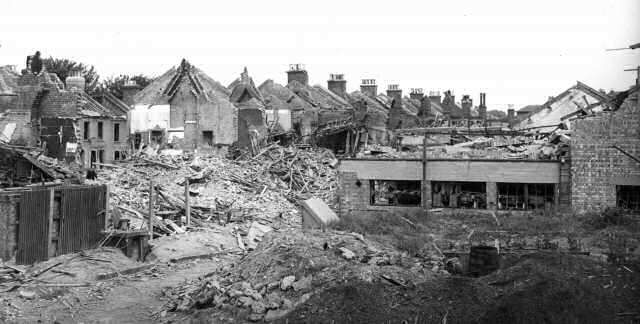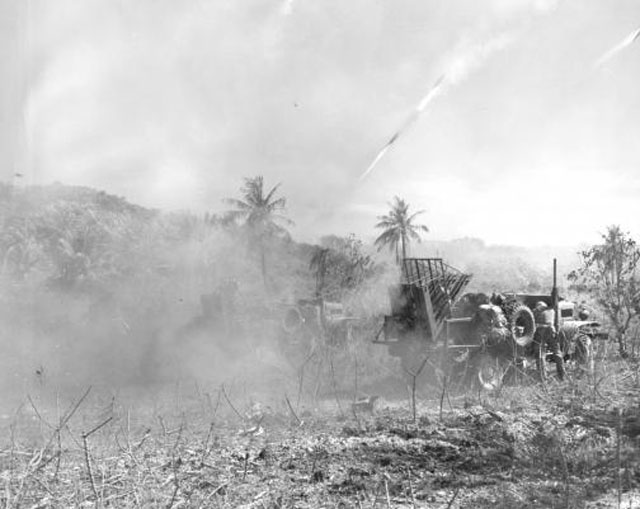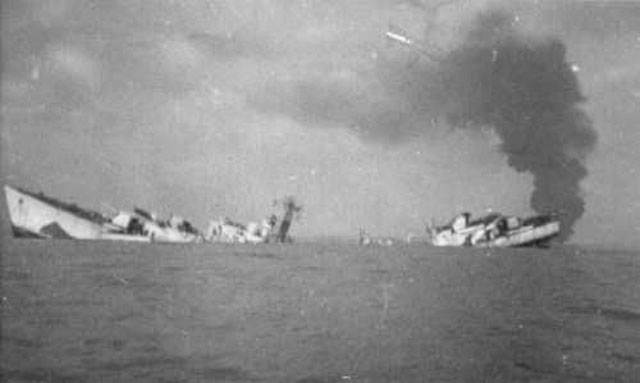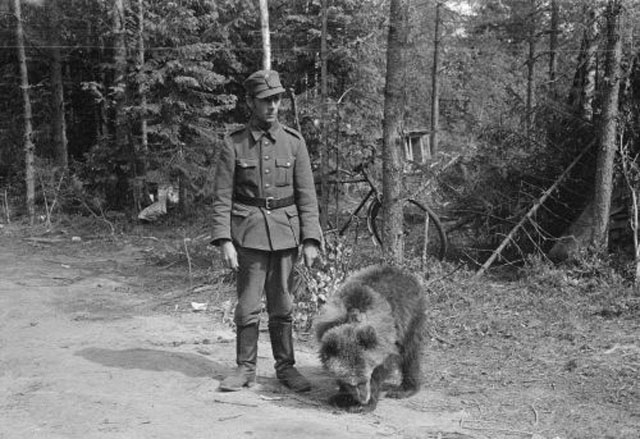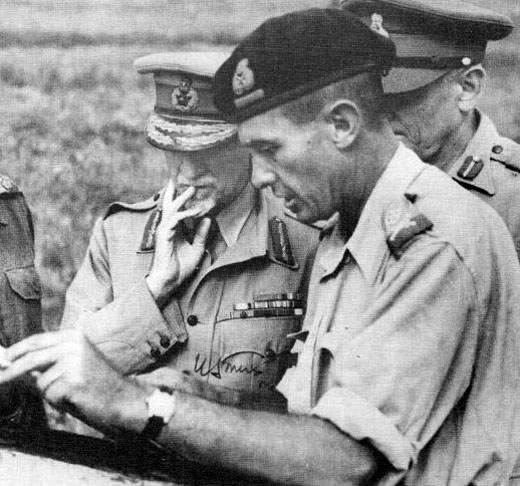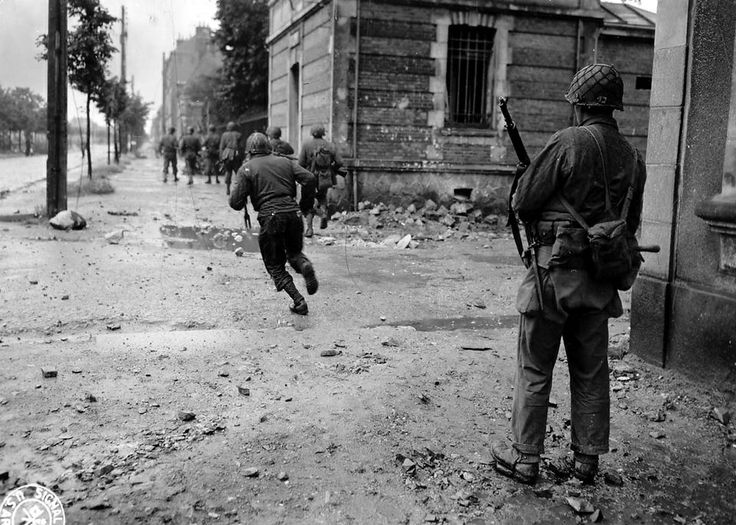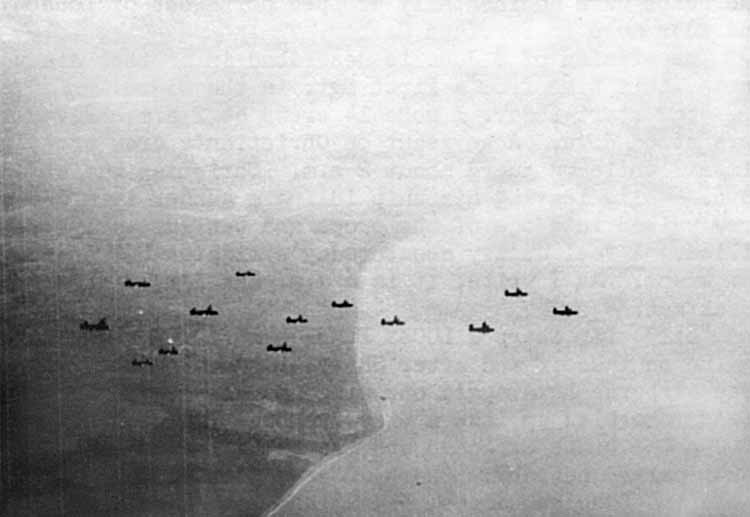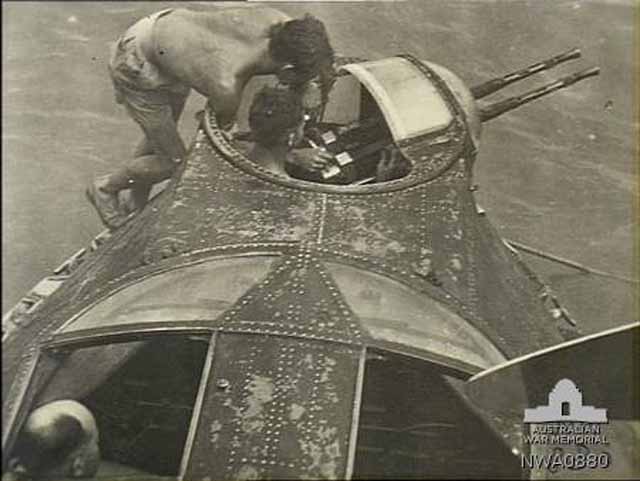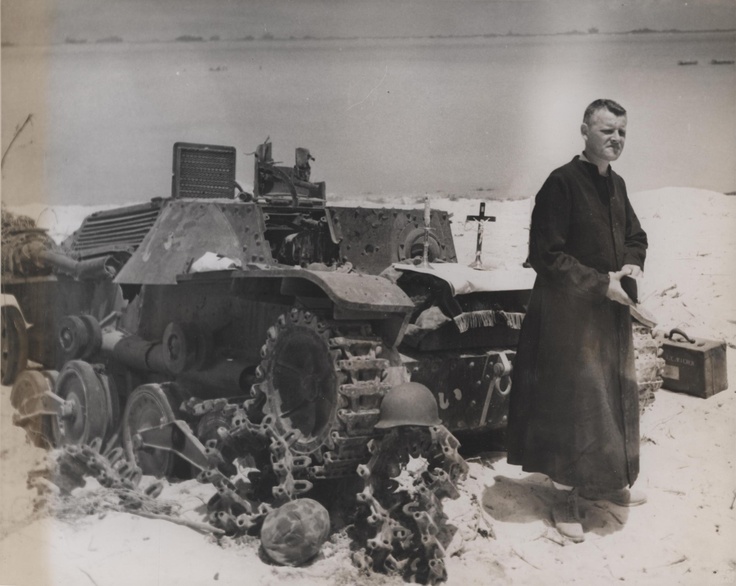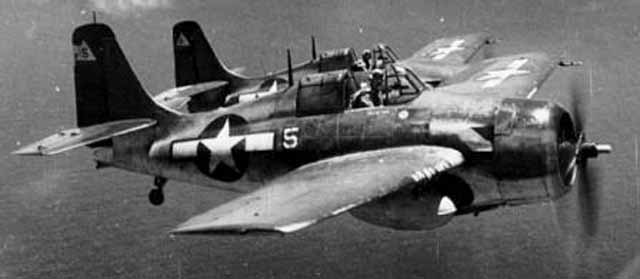Air Operations, Carolines
18 XIII Bomber Command B-24s attack the Yap Atoll.
[Air Operations, CBI
BURMA- More than 60 10th Air Force fighter-bombers attack Hopin, Mawlaik-Kin, Mogaung, Myitkyina, and Pinbaw.
- 11 7th Heavy Bomb Group B-24s airlift fuel to Kamaing.
- 4 341st Medium Bomb Group B-25s and several 14th Air Force P-40s attack a bridge near Chenghsien.
- More than 60 P-38s and P-40s attack Japanese Army cavalry near Hengyang, a pontoon bridge near Tengchung, and two occupied towns.
- 35 10th Air Force B-25s airlift ammunition to Imphal.
Air Operations, Europe
RAF BOMBER COMMANDDaylight Ops:
- 321 aircraft including 200 Halifaxes, 106 Lancasters and 15 Mosquitos, of Nos. 1, 4, 6 and 8 Groups attack 3 flying bomb sites in clear weather conditions. All targets are accurately bombed and there are no losses.
- 16 Lancasters and 2 Mosquitos of No. 617 Squadron bomb the Wizernes site and score several hits with their Tallboy bombs.
- 1 Lancaster is lost to flak fire.
- 739 aircraft from all groups attack 7 flying bomb sites causing fresh damage to all the targets. Included in the aircraft total are 535 Lancasters, 165 Halifaxes and 39 Mosquitos. The flying bomb sites have now become so cratered by RAF, 8th Air Force and 2nd Tactical Air Force bombing that results for individual raids are becoming difficult to determine.
- 22 Lancasters are lost from these raids. It is a clear, moonlit night and most of the bomber casualties are caused by German night fighters, often operating with the help of searchlights.
- 27 Mosquitos are sent to Berlin, 13 aircraft lay mines off French ports and in the Kattegat, and there are 34 Mosquito patrols and 7 RCM sorties.
- 1 Mosquito is lost on the Berlin raid.
FRANCE:
- During the morning, 74 1st Bomb Division B-17s and 265 2nd and 3rd Bomb Division B-24s attack airdromes, auxiliary fighter strips, and bridges in central and northwestern France. 11 1st Bomb Division unable to attack their targets in Germany attack the city of Rouen.
- 1 B-17 and 2 B-24s are lost
- 307 VIII Fighter Command fighters provide escort for the morning heavy-bomber missions.
- 1 fighter is lost with its pilot
- During the afternoon, 57 1st Bomb Division B-17s and 105 2nd Bomb Division B-24s attack two electrical power stations, a marshalling yard at St.-Pol-sur-Mer, and V-weapons sites in the Pas-de-Calais area.
- 2 B-24s are lost
- 118 VIII Fighter Command fighters provide escort for the afternoon mission. Also, 25 VIII Fighter Command P-51s conducting a sweep through the Angers-Le Mans area destroy 25 Luftwaffe on the ground.
- 214 8th Air Force B-17s attack oil-industry targets at Bremen.
- 40 B-17s attack the city of Bremen.
- 53 B-17s unable to attack the city of Bremen attack an aircraft-industry site at Wesermunde.
- 1 B-17 is lost
- 251 VIII Fighter Command P-38s and P-47s provide escort for the heavy-bomber mission to Bremen.
FRANCE:
- More thant 430 IX Bomber Command B-26s and A-20s attack V-weapons sites, gun emplacements, fuel dumps, marshalling yards at two locations, and a rail bridge.
- 11 9th Air Force fighter groups provide escort for the bombers and attack fuel dumps, bridges, and rail targets west of Paris.
- 9th Air Force fighter and fighter-bomber pilots down 4 Luftwaffe fighters and 1 Ju-52 between 1245 and 1830 hours.
ITALY:
- 12th Air Force bombers are grounded by bad weather, and fighter-bomber operations are severely restricted, but some XII TAC P-47 groups are able to attack several bridges, rail lines, gun emplacements, and tactical targets in and around the battle area.
ROMANIA:
- 15th Air Force B-24s attack oil-industry targets at Ploesti and the rail depot at Craiova.
- 15th Air Force B-17s attack a rail bridge.
- Pilots of the 31st, 82nd, and 325th Fighter Groups down 14 Axis fighters over Bulgaria and Romania between 0850 and 1030 hours.
Air Operations, Marianas
- Between midnight and 0100 hours, 1 of 7 G4M 'Betty' bombers sent from Iwo Jima drops a stick of bombs in the wake of a US cruiser and the others damage several vessals in the anchorage off Guam.
- 318th Fighter Group P-47s attack Japanese Army ground troops on Saipan, and 7 rocket-armed P-47s attack artillery positions on Tinian that are firing on US ground troops on Saipan. 1 P-47 and its pilot are lost over Tinian.
- 6th Night Fighter Squadron P-61s, in their first use in the campaign, are unable to score any victories against Japanese hecklers—4 Japanese Navy torpedo bombers from Peleliu that attack and miss a ship off Saipan.
Air Operations, New Guinea
- V Bomber Command B-25s, A-26s, and A-20s attack the airfields at Kornasoren and the Kamiri on Noemfoor, and shipping near Babo.
- 12 38th Medium Bomb Group B-25s mount a pinpoint attack with 1,000-pound bombs against Japanese Army-held caves near the Mokmer airfield on Biak.
- 5th Air Force and RAAF aircraft attack numerous targets in the Wewak area.
- V Bomber Command B-24s assigned to attack Noemfoor Island are grounded by bad weather over the Nadzab-area bases.
Air Operations, Volcano Islands
Task Group 58.1 carrier aircraft attack airfields, fuel supplies, and barracks at Iwo Jima. Of more than 140 Japanese Navy fighters and bombers sent from the island in three separate waves to challenge the attackers, 116 are claimed by F6F pilots. Antiaircraft fire downs additional attackers over the carriers.
Allied Planning
The JCS supports ANVIL (the invasion of southern France) because it focuses Allied power on the rapid defeat of Germany. Southern France would provide major ports and allow French forces to assist in liberating their own country.
[Atlantic
A TBM from the escort carrier Bogue (CVE-9) sinks the Japanese submarine I-52 800 miles southwest of Payal, Azores.
[Battle of the Atlantic
- The Japanese submarine I-52 is sunk by aircraft (VC-69) from the US escort carrier Bogue (CVE-9) in the Atlantic Ocean area.
- U-971 is on her way to Brest for repairs from damage suffered in repeated air attacks. The U-boat is spotted by Liberator 'O' of No 311 Squadron which summons the Canadian destroyer Haida and British destroyer Eskimo. Several depth charge attacks are delivered before the submarine surfaces sinking soon thereafter.
| Class | Type VIIC |
| CO | Oberleutnant zur See Walter Zeplien |
| Location | English Channel, NW of Ushant |
| Cause | Depth charge |
| Casualties | 1 |
| Survivors | 52 |
Bonin Islands
The Japanese bases on Iwo Jima and Chichi Jima are attacked by American carrier aircraft. The Japanese lose 66 planes. The carriers involved are Hornet (CV-8), Yorktown (CV-10), Bataan (CVL-29) and Belleau Wood (CVL-24). Adm Joseph J. Clark is in command.
[Britain, Home Front
Sidney Keyes, a war poet who was killed in Tunisia, is posthumously awarded the Hawthornden Prize.
[Eastern Front
The Leningrad Front continues its offensive in the isthmus of Karelia. Already, on the second day of the Soviet offensive, the strain on the German defenders in Army Group Center is considerable. The advance is as much as 25 miles deep in some places and the Orsha-Vitebsk rail line has been cut.
CENTRAL USSRThe Soviet 6th Guards and 43rd Armies cross the Dvina River, brushing aside a counterattack by the German IX Corps. the German VI Corps is largely annihilated by the Soviet 39th Army, and LIII Corps is not isolated in Vitebsk. The 39th anr 43rd Armies then link up on the road to Mogilev. The Soviet 11th Guards Army batters the German XXVII Corps. The 1st Belorussian Front opens its offensive with the 3rd and 8th Armies, which quickly overwhelm XXXV Corps. Soon the junction of the 4th and 9th Armies is being prised apart by the Soviet 3rd Army, prompting a counterattack by the 20th Panzer Div. To the south XLI Corps is forced to retreat. Hitler orders the 5th Panzer Div from the Ukraine to renforce Army Group Center - a single division to stop BAGRATION!.[MORE]
[Italy
The 1st Motorized Div of the French Expeditionary Corps leaves Italy to take part in Operation ANVIL, the landing projected for the south of France.
In the US 5th Army sector, the IV Corps continues its advance north, meeting firm opposition from the German rearguards.
The Groupe Guillaume of the French Expeditionary Corps crosses the Omborne River and advances northward to meet the 1st Arm Div of the US IV Corps.[ITALY]
[Marianas
The 27th Div has completed the clearance of the southern part of the island and most of the component parts of the division join the main advance of the Marines to the north. The fighting here is fiercest, still, on Mount Tapotchau and in 'Death Valley'. Gen Ralph Smith, Commander of the 27th Inf Div, is accused of inefficiency and replaced by Gen Sanderford Jarman.[SAIPAN]
[New Guinea
On Biak, TF HURRICANE, the 186th and 163rd Infantry Regiments, cuts exits from the Teardrop. The 2nd Battalion, 186th Infantry, moves north and east to reach the northwest corner. Company K, 163rd Infantry, blocks the northern exits and Company C, 163rd Infantry, guards the east side.
In the Wakde-Sarmi area, TF TORNADO begins outflanking attacks on Lone Tree Hill. Companies K and L, 1st Infantry, move by sea to the coast just west of the hill and establish a small beachhead. They try in vain to push inland to clear the west side of the hill. The 2nd and 3rd Battalions, 20th Infantry, assisted by Company L of the 1st, make slow progress against numerous enemy defenses on top of the hill and open a supply route. Company M, 1st Infantry, moves along the coast to assist. The Japanese effectively prevent any further movement off the narrow beachhead.
[Norwegian Sea
Canso 'P' of No 162 Squadron RCAF is returning to Wick from patrol when a surfaced U-boat (U-1225 is sighted. The U-boat responds with a barrage of flak damaging the aircraft. Despite the damage the aircraft succeeds in dropping four depth charges straddling the U-boat sinking her.
| Class | Type IXC/40 |
| CO | Oberleutnant zur See Ernst Sauerberg |
| Location | Norwegian Sea, NW of Bergen |
| Cause | Air attack |
| Casualties | 56 |
| Survivors | None |
Occupied France
The Resistance blows up the hydroelectric station near Limoges.
[Pacific
- The US motor torpedo boat PT-193 is burned by her crew after being irreparably damaged by grounding in western New Guinea.
- The US submarine Grouper (SS-214) attacks a Japanese convoy off the coast of central Japan and sinks the cargo ship Kumanoyama Maru (2857t) and the merchant tanker No.6 Nanmei Maru south of Yokosuka.
- The US submarine Redfin (SS-272) attacks Japanese convoy off the southern coast of Leyte and sinks the army cargo ship Aso Maru (3028t) southwest of Surigao Strait.
- The US submarine Tang (SS-306) attacks a Japanese convoy leaving Koshiki Straits and sinks army cargo ships Tamahoko Maru (6780t) and Kennichi Maru (1938t) and merchant tanker Nasuzan Maru (4399t) and cargo ship Tainan Maru (3175t) outside Nagasaki harbor, Kyushu.
Western Front
Fighting continues around Cherbourg, where the Germans continue to fight with what Allied correspondents call 'the courage of despair'. Elements of the 9th Div press on the city from the northwest while in the center the regiments of the 79th Div reach and capture La Mare-à-Canards and Hameau-Gringer and advance toward Forte-du-Roule.[WF]
The garrison commander in Cherbourg, Gen Karl von Schlieben, reports to his superiors that the ability of his troops to hold out is rapidly diminishing. He is doubtful whether another attack can be repulsed.[CAEN]
[Images from June 24, 1944
|
|
|
|
|
|
|
|
|
|
|
|
